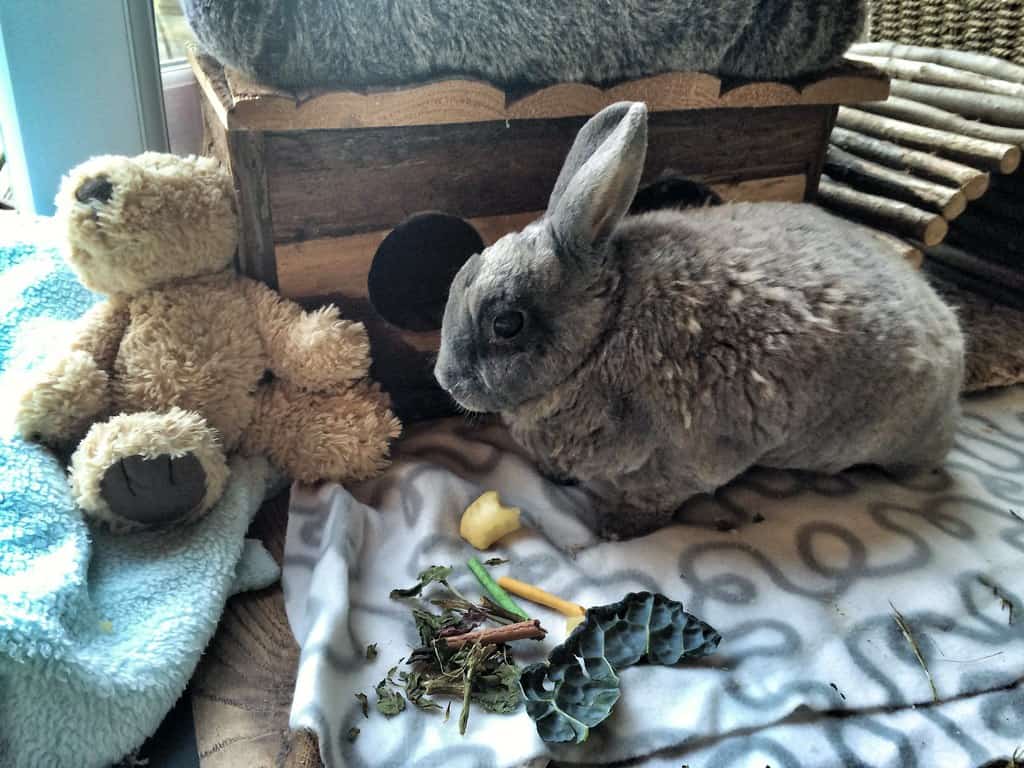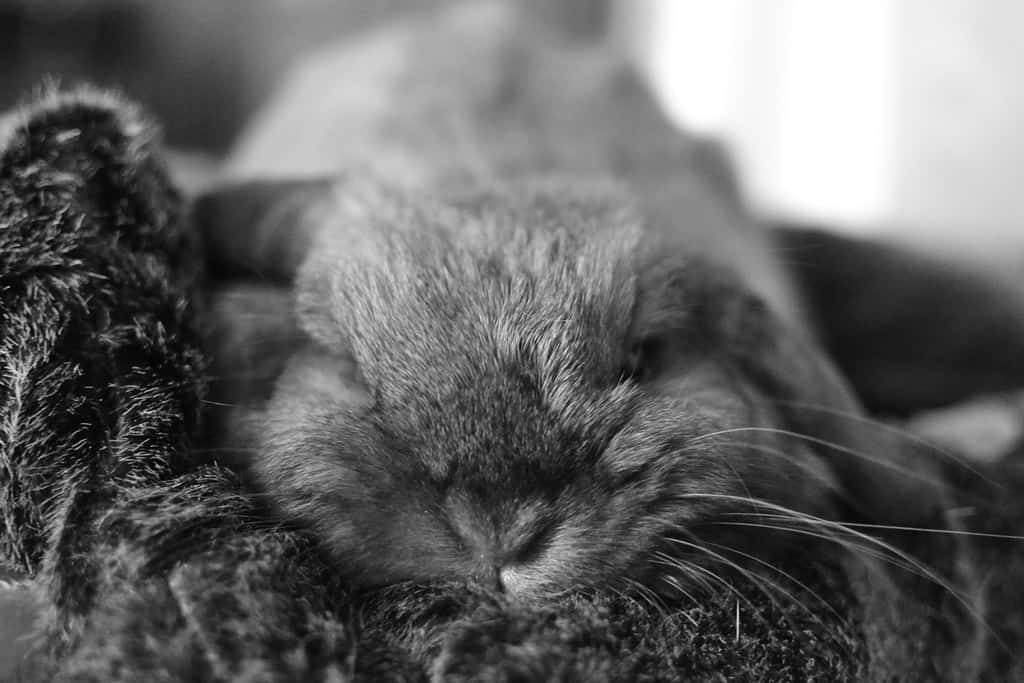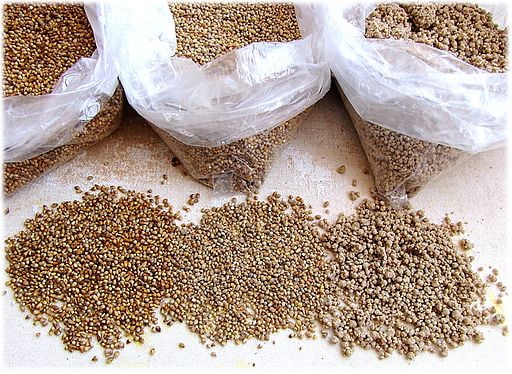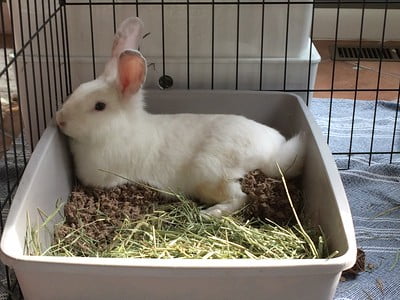Last Updated on February 26, 2023 by Marjon Ramos
Rabbits grinding their teeth can mean two things, depending on how loud the grinding is. When a rabbit grinds its teeth loudly with stiff body language, then your rabbit is in pain.
But when the grinding is quiet with a relaxed body language, then it’s a sign of contentment and enjoyment. This behavior of lightly grinding its teeth when a rabbit is happy and content is called “purring.”
Purring also happens a lot when a rabbit is being petted by its owners.
Now that I’ve given you the gist of what it means when a rabbit grinds its teeth, stick around to find out how to better spot the difference:
Table of Contents
Is it a loud grinding?

Determining if your rabbit is in pain by listening to loud teeth grinding can be tricky. The reason is that you have no baseline on how loud the grinding has to be for it to be a sign of pain.
That’s why the best way to determine if your rabbit is in pain is by looking for additional symptoms of a rabbit that’s in pain:
Your rabbit is in a lot of pain.
To know for sure that your rabbit is in pain, look for additional symptoms like:
- Low energy
- Aggression towards you, their owner, or another rabbit.
- Rapid breathing
- Low appetite
- High-pitched squeals
What should you do if your rabbit is in a lot of pain?
First, check if there are any open wounds by looking for missing fur. Most of the time, a rabbit will develop sore hocks, especially if they are in cages with wire flooring.
But if you haven’t seen anything wrong physically, go to a veterinarian because it could be something serious like GI stasis.
If it’s a quiet tooth grinding

If it’s quiet teeth grinding or it only happens when you stroke or pet your rabbit, then pat yourself in the back because your rabbit is:
Your rabbit is happy.
The signs that your rabbit is happy and content include:
- Your rabbit is licking you.
- Your rabbit is nudging you.
- Your rabbit is jumping on your lap and letting you pet them.
- Your rabbit has happy ears, or ears that point upward.
- Your rabbit is relaxed when sleeping.
- Running around in circles around you.
- Your rabbit is playing or running on its own.
- Your rabbit would “Binky”
Summary
Rabbits grinding their teeth can either be good or bad, depending on how loud it is. Quiet teeth grinding is called “purring.” Rabbits purr when they are happy and content.
Purring also happens when you stroke or pet your rabbits. This is often accompanied by other body language like happy upward ears, relaxed body, and just generally comfortable around you.
In contrast, loud teeth grinding can be troublesome because it’s a sign that your rabbit is in pain. While it can be hard to determine what exactly is “loud teeth grinding,” the best way to know if your rabbit is in pain is by looking for additional symptoms.
Rabbits that are in pain would have a totally different body language, and they would have low energy, aggression towards you or another rabbit, rapid breathing or shaking, low appetite, and sometimes high-pitched squeals.
If you notice any one of these symptoms, even without the loud tooth grinding, call a veterinarian immediately. Your rabbit might be suffering from digestive issues that are fatal to rabbits extremely fast, like GI stasis, which also have similar symptoms.
You could also start looking for the problem after calling your vet. Look for open wounds or missing fur. Most of the time, it’s on their feet or hocks.
Cite this article:
Sources and further reading
- Buseth, Marit Emilie., and Richard A. Saunders. Rabbit Behaviour, Health, and Care. CABI, 2014.
- Lebas, F. The Rabbit: Husbandry, Health, and Production. Food and Agriculture Organization of the United Nations, 1997.
- Patry, Karen, et al. The Rabbit-Raising Problem Solver: Your Questions Answered about Housing, Feeding, Behavior, Health Care, Breeding, and Kindling. Storey Publishing, 2014.
- Pododermatitis in rabbits – sore hocks
- Pain in rabbits
- Gastrointestinal Stasis in Rabbits
Image credit – “Rabbit Teeth” by phil_websurfer is licensed with CC BY-NC-ND 2.0. To view a copy of this license, visit https://creativecommons.org/licenses/by-nc-nd/2.0/




